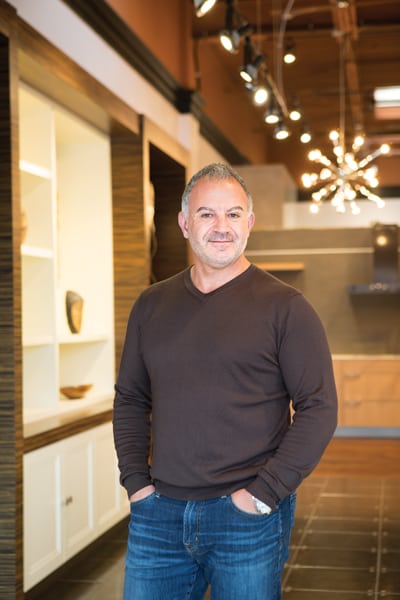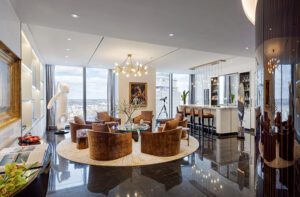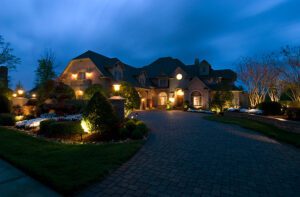Five Questions: Pierre Matta
July 17, 2018
Kitchen design has come a long way, says Pierre Matta of Newton Kitchens & Design.
Text by Robert Kiener Photography by John Soares
 1. How did you get involved in kitchen design?
1. How did you get involved in kitchen design?
I have been a general contractor, a cabinet maker, and a furniture maker. My passion is designing and building custom furniture and cabinets. I like to incorporate aspects of furniture into cabinet design. My style is kind of edgy, funky. I love using multiple materials together. If we do a clean, crisp kitchen, I like to balance it with a warm wood floor, ambient lighting, a colorful backsplash, cool hardware—just that splash of something that makes it stand out without going overboard.
2. The kitchen has become the hub of the home. How has this influenced design?
Times have changed since the kitchen used to be segregated in the back corner of the house. Many homeowners now want the kitchen exposed to another living space because they enjoy sharing the experience of cooking with friends and family. So it’s important to have a design that lets the cook be part of the company and entertainment. Islands are great because everyone likes to hang out, smell the food, talk. Adding a prep area at the end of an island allows you to talk to your company as you work. A second sink in an island ensures your back isn’t turned on company when you’re getting dinner ready.
3. What are the challenges of incorporating modern kitchens into traditional homes?
Many New England homeowners who are transitioning to a cleaner, modern look for the kitchen may think, “I have to go with white, high-gloss, flat-panel cabinets.” But this is not necessarily true. To balance a modern kitchen with a more traditional home, you might do a flat wood finish on a door to tone it down. Or you can incorporate raw materials—I like classic rosewood or glass—to soften that modern look. You want to marry the two styles and have them complement each other. Adding classic touches that work in both modern and traditional designs assures a transitional kitchen will stay in style longer.
4. Is it true that kitchen design is hard to get right because it’s so personal?
Absolutely. Because everyone is unique in the way they like to cook, it’s wrong to impose cookie-cutter ideas on people. Before I come up with a design idea, I like to go to a client’s home and interview them. I see how they use their kitchen and ask them what they like and dislike about it; what they would like to change and what they would like to keep. Personal details matter, too. For instance, we have lots of couples where the husband is tall and wife is short. So we will make the island lower for the wife, and we’ll raise the hood vent for the husband so he doesn’t hit his head on it when he leans over the stove. We also take into consideration the height of people when deciding how deep the sink should be. An eight-inch-deep sink is very different from a ten-inch one because you have to lean over more to use a deeper sink. Those two inches can put a big strain on your lower back.
5. What does modern lighting add to a kitchen design?
Lighting is functional, but it can also be used to set the tone or mood. I like to load up a kitchen with lights. When we build our cabinets, we rout out the bottoms to install LED lights that are flush, so you don’t see any wiring or need any clunky light fixtures under the cabinets. We also do toe-kick lighting; it’s a great night light because it lights up the floor and cascades out, creating a pathway. LED lights now come in different shades and warmth—anything from a soft ambient light to daylight lighting. It’s very important to put everything on dimmers and be able to control the lighting in different zones. You want your task lighting to be very bright and your ambient lighting to be adjustable from dim to moderate. Lighting can really bring a kitchen design to life. | Newton Kitchens & Design, Newton, Mass., (617) 559-0003, newtonkd.com
Share
![NEH-Logo_Black[1] NEH-Logo_Black[1]](https://b2915716.smushcdn.com/2915716/wp-content/uploads/2022/08/NEH-Logo_Black1-300x162.jpg?lossy=1&strip=1&webp=1)







You must be logged in to post a comment.